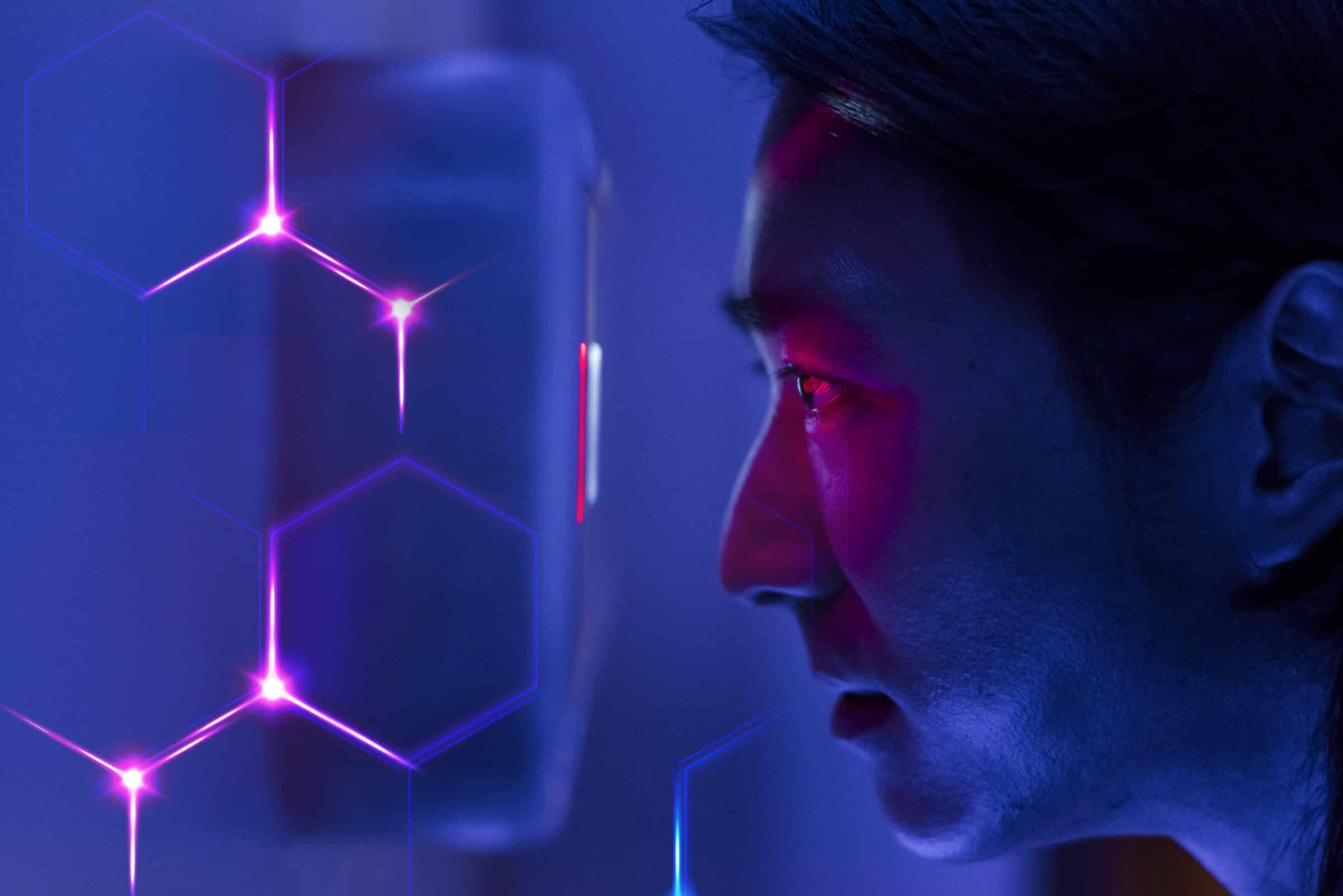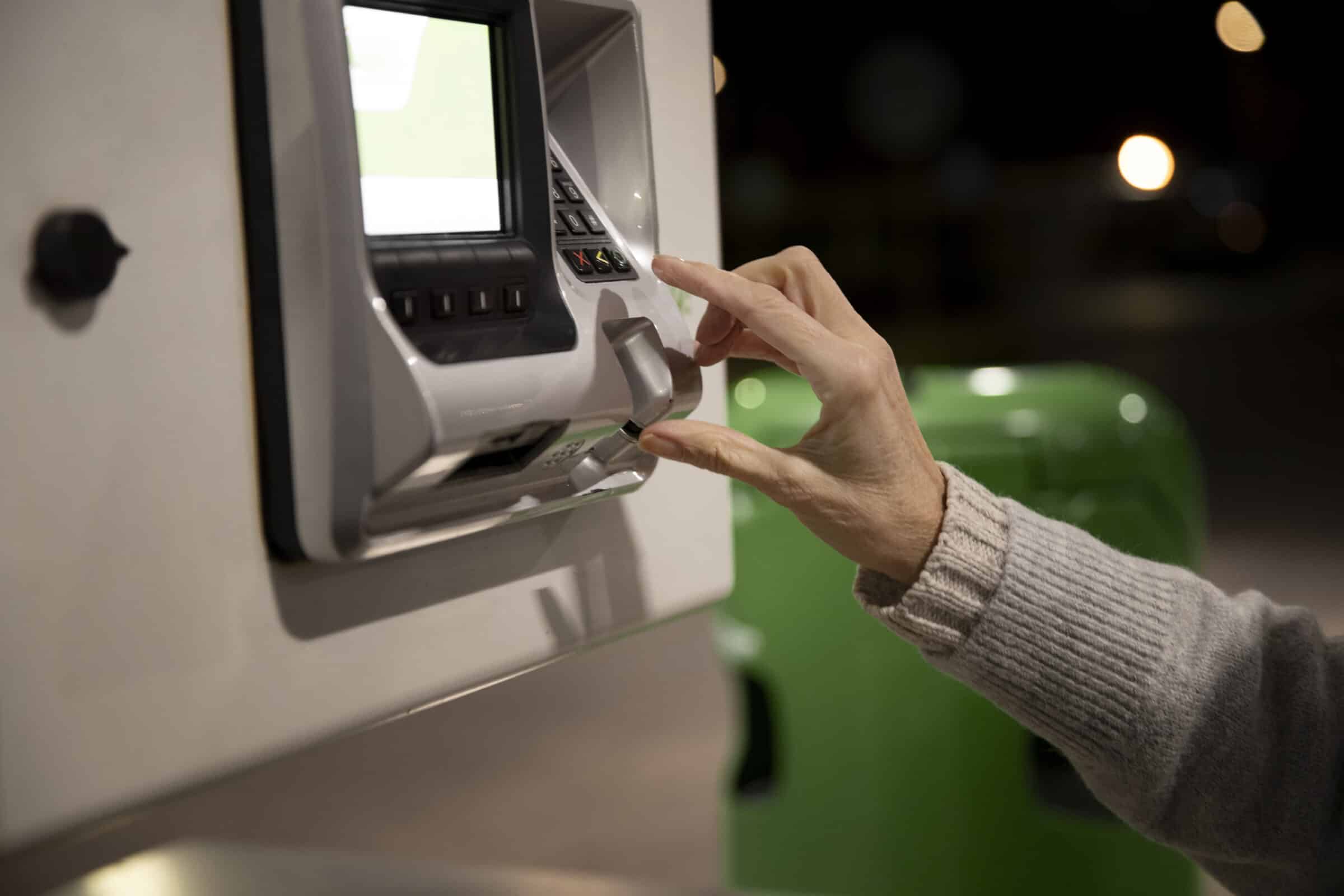Much like how your fingerprint is personal data totally unique to you, so is your face.
Technology has come a long way in recognising faces and using them as a form of identification, known as facial recognition.
With the rise of the Internet of Things (IoT) alongside this new facial recognition technology, hyper-personal data is now being used to enhance security systems and make our lives more convenient.
What’s more, the emergence of Artificial Intelligence (AI) has only furthered IoT’s development within this field, providing society with a range of never-before-seen benefits, each with its own unique challenges.
In this blog post, we will explore the world of IoT facial recognition, how AI is shifting the IoT landscape as we know it and its potential impact on society. Keep reading to learn more.




What is AIoT?
IoT is an innovative technology that has completely revolutionised and reshaped society – often without the general public even realising it. Devices using the Internet of Things use various sensors and connectivity systems to collect, transmit and analyse data, providing insight into our behaviour and environment while streamlining operations globally. From a smart thermostat that can automatically adjust the temperature in your home to an integrated network of sensors within one of the many smart cities around the world, such as in Japan, the Middle East, Germany and more, IoT is everywhere. However, with the introduction of AI, the capabilities of these IoT devices have only expanded. The Artificial Intelligence of Things (AIoT) is a key player in modern human recognition software, using AI to improve the efficiency of smart devices without the need for human intervention. This innovative capability allows businesses globally to apply machine learning to vast quantities of data, dramatically speeding up key processes, such as facial tracking, recognition and analysis. In turn, this leads to major cost savings, a more efficient use of resources, and improved security protocols. As the technology progresses, advances, and grows – so does its economy. The AIoT industry is currently worth £14.8 billion and is estimated to grow to £99.8 billion by 2028, according to the same research. This means the AIoT industry is expected to grow with a CAGR of 37.45% during the 2022 to 2028 period.
Man scanning his eyes biometrics security technology digital remix
How does IoT facial recognition work?
Facial recognition technology uses biometric software to map facial features, such as eye position, jawline and nose shape to identify individuals. Although facial recognition technology is not exactly new, developments in AI have significantly evolved the accuracy and speed of the process, allowing for more sophisticated applications in various industries. The IoT facial recognition process uses a combination of connected sensors, processors and AI to capture, analyse and verify a person’s identity based on unique facial features. Typically, edge-based facial recognition is embedded into the IoT device and does not require cloud processing to function. These could include mobile phones, interactive kiosks, point-of-sale systems and smart locks. IoT devices with such embedded technology combine their advanced chipset solutions with AI technology to provide devices to successfully perform real-time face recognition in milliseconds. Depending on the context in which the AI facial recognition is being used, the solution can typically be scaled up or down to meet specific business needs or use cases. For example, the AIoT solutions using the best edge-based technology are able to process images, encrypt data and feed the camera quickly with a high degree of accuracy and speed. This would best be used in a highly regulated environment, such as a bank or government institution.Use cases of IoT facial recognition
As we hinted at in the last paragraph, there are a multitude of ways IoT facial recognition can be used in various industries.1) Smart wallets
Perhaps the most common use of AIoT in day-to-day life for the general public, smart wallets are an excellent way to use facial recognition technology in a convenient manner. Whether it’s Apple Pay or Google Pay, many of us now use our smartphones to pay for goods and services in retail stores. These systems allow users to link their credit or debit cards to their smartphones and pay at the point of sale. However, the latest smart wallets use facial recognition technology to further enhance this functionality, making payments more secure than traditional contactless methods. By simply scanning your face, you can unlock and access your virtual wallet, speeding up transactions and ensuring only you have access to your finances. This technology is already in use by various financial institutions globally, such as Mastercard’s “Selfie Pay” feature.2) Access control
Facial recognition technology is being increasingly adopted for access control in offices, households, residential complexes, factories and medical facilities, helping to improve security and streamline entry. AIoT-enabled devices, such as door locks and security systems, can use facial recognition to quickly and accurately identify authorised personnel, granting them access while denying entry to those who do not have permission. This is particularly useful in areas where traditional key or card-based systems would be impractical or inconvenient, such as in healthcare facilities where staff members need to quickly move between rooms and wings. Using IoT facial recognition technology, individuals can reduce the risk of human error and security breaches whilst reducing waiting times for entry.
3) Financial fraud prevention
The integration of AIoT technology in the financial industry is no longer a feature – it is a necessity. By providing a secure and unique method of two-factor authentication through identity verification, facial recognition technology can significantly reduce fraudulent activities such as identity theft, which are regularly faced by financial institutions today. Major banks can utilise the technology to electronically Know Your Customer (eKYC), significantly increasing security fraud prevention. AIoT-enabled systems can analyse live video footage of a customer interacting with their banking mobile app and use facial recognition to confirm their identity. In turn, the integration of human recognition software ensures that only authorised individuals have access to sensitive financial data and transactions, further securing the banking experience for customers.4) CCTV face recognition in surveillance
Considering over £1.5bn of retail goods are stolen off UK shop shelves every year, retailers are broadening their horizons and beginning to implement AIoT facial recognition technology to deter theft and violence against shop staff. Facewatch, the UK-based leaders in UK GDPR-compliant IoT facial recognition, has developed a system that enables the police to securely access and utilise facial recognition technology in their fight against crime. Facewatch deploys sophisticated AI technology which can recognise criminals who are specifically banned from entering shops, recognising them instantly even if they come back wearing glasses or a hat. The software can be used by retailers to identify organised gangs and shoplifters while monitoring staff safety and customer behaviour. Through facial recognition technology, the police can identify and intervene with criminal activity without disrupting innocent people. This also helps to create a safer shopping environment for customers and employees alike.5) Smart signage
As the last use case mentions, the retail sector is taking significant strides to integrate IoT facial recognition technology into their businesses. This rings particularly true in the area of smart signage and retail analysis. Smart signs equipped with IoT facial recognition can identify and analyse shoppers’ demographic attributes and emotional feedback in real-time. This technology enables retailers to personalise messages, advertisements, and promotions on digital displays based on the viewer’s age, gender, and emotional state, thus enhancing customer engagement. Beyond personalised advertising, the collected data provides retailers with valuable insights into customer behaviour and preferences, aiding in-store layout optimisation, product placement, and overall sales strategy. This innovative use of IoT facial recognition is enabling retailers to revolutionise the shopping experience, creating dynamic, personalised environments that cater to individual customer needs and preferences.
Challenges of AIoT
While there are many clear benefits of utilising human recognition software that can be applied to countless industries and applications, there are some significant challenges that must be considered.Privacy concerns
Perhaps the most significant challenge associated with AIoT and IoT facial recognition is the issue of privacy. The collection of biometric data inevitably raises questions about user consent, data storage, and the potential misuse of such information. There is an inherent risk of personal data being exploited if not properly safeguarded, leading to an invasion of privacy and potential identity theft. Furthermore, the ubiquity of facial recognition technology in public spaces can lead to unwanted surveillance, creating concerns about an individual’s right to anonymity. Balancing the benefits of this technology while ensuring robust privacy protection measures are in place remains a significant challenge in the wider adoption of AIoT.Ownership issues
Ownership issues form another prevalent challenge in the deployment of AIoT and IoT facial recognition technologies. As biometric data is unique and personal to each individual, questions arise around who owns this data once captured and who should have the right to access, utilise, and control it. This becomes particularly complex when data is collected and processed by private companies who may claim ownership. As facial recognition technology becomes increasingly ubiquitous, substantial amounts of biometric data are being collected daily, creating a valuable commodity. This information, if sold or shared without proper consent, could lead to serious privacy invasions or misuse. Additionally, cross-border data transfers add an additional layer of complexity, as different jurisdictions have varying laws regarding data ownership and privacy protection. It’s critical to establish clear laws and regulations outlining data ownership, ensuring that individuals retain control over their own biometric data and that ethical, transparent practices are followed by companies and institutions utilising these technologies.Security risks
The security risks associated with AIoT and IoT facial recognition technologies represent a formidable challenge. As these systems collect and process highly sensitive biometric data, they become attractive targets for cybercriminals. Unauthorised access to these databases can lead to serious breaches, exposing individuals’ personal information and infringing upon their privacy. Additionally, the risk of system manipulation, where malicious actors might alter or tamper with the data or the facial recognition algorithms themselves, presents another security concern. This could potentially lead to false identifications or misclassification far-reaching consequences. Therefore, implementing robust cybersecurity measures and protocols is of paramount importance in mitigating these risks and ensuring the safe and ethical use of AIoT and facial recognition technologies.Not always accurate
Accuracy is a central challenge in harnessing AIoT and IoT facial recognition technologies effectively. Research suggests that some facial recognition software can be deceived or err in identifying individuals correctly. Particularly concerning are the system’s well-documented struggles in accurately discerning people of colour, women, and older persons. These biases in identification stem from deficits in the software’s algorithmic design, often due to the lack of diversity in the data sets used to train these systems. As such, it runs the risk of perpetuating social biases and leading to unjust outcomes, such as false accusations or unwarranted surveillance. It’s clear that improving the accuracy and fairness of these technologies is a crucial task, requiring more inclusive and diverse data sets, vigilant oversight, and continuous algorithmic refinement.
